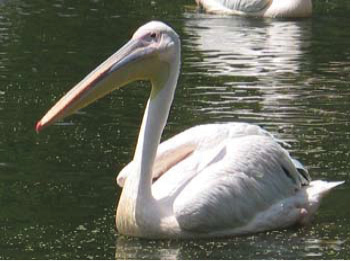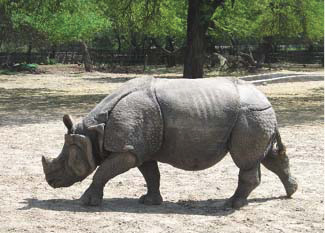Taxonomic studies of various species of plants, animals and other organisms are useful in agriculture, forestry, industry and in general in knowing our bio-resources and their diversity. These studies would require correct classification and identification of organisms. Identification of organisms requires intensive laboratory and field studies. The collection of actual specimens of plant and animal species is essential and is the prime source of taxonomic studies. These are also fundamental to studies and essential for training in systematics. It is used for classification of an organism, and the information gathered is also stored along with the specimens. In some cases the specimen is preserved for future studies.
Biologists have established certain procedures and techniques to store and preserve the information as well as the specimens. Some of these are explained to help you understand the usage of these aids.
Herbarium is a store house of collected plant specimens that are dried, pressed and preserved on sheets. Further, these sheets are arranged according to a universally accepted system of classification. These specimens, along with their descriptions on herbarium sheets, become a store house or repository for future use (Figure 1.2). The herbarium sheets also carry a label providing information about date and place of collection, English, local and botanical names, family, collector’s name, etc. Herbaria also serve as quick referral systems in taxonomical studies.

Figure 1.2 Herbarium showing stored specimens
These specialised gardens have collections of living plants for reference. Plant species in these gardens are grown for identification purposes and each plant is labelled indicating its botanical/scientific name and its family. The famous botanical gardens are at Kew (England), Indian Botanical Garden, Howrah (India) and at National Botanical Research Institute, Lucknow (India).
Biological museums are generally set up in educational institutes such as schools and colleges. Museums have collections of preserved plant and animal specimens for study and reference. Specimens are preserved in the containers or jars in preservative solutions. Plant and animal specimens may also be preserved as dry specimens. Insects are preserved in insect boxes after collecting, killing and pinning. Larger animals like birds and mammals are usually stuffed and preserved. Museums often have collections of skeletons of animals too.
These are the places where wild animals are kept in protected environments under human care and which enable us to learn about their food habits and behaviour. All animals in a zoo are provided, as far as possible, the conditions similar to their natural habitats. Children love visiting these parks, commonly called Zoos (Figure 1.3).




Key is another taxonomical aid used for identification of plants and animals based on the similarities and dissimilarities. The keys are based on the contrasting characters generally in a pair called couplet. It represents the choice made between two opposite options. This results in acceptance of only one and rejection of the other. Each statement in the key is called a lead. Separate taxonomic keys are required for each taxonomic category such as family, genus and species for identification purposes. Keys are generally analytical in nature.
Flora, manuals, monographs and catalogues are some other means of recording descriptions. They also help in correct identification. Flora contains the actual account of habitat and distribution of plants of a given area. These provide the index to the plant species found in a particular area. Manuals are useful in providing information for identification of names of species found in an area. Monographs contain information on any one taxon.
The living world is rich in variety. Millions of plants and animals have been identified and described but a large number still remains unknown. The very range of organisms in terms of size, colour, habitat, physiological and morphological features make us seek the defining characteristics of living organisms. In order to facilitate the study of kinds and diversity of organisms, biologists have evolved certain rules and principles for identification, nomenclature and classification of organisms. The branch of knowledge dealing with these aspects is referred to as taxonomy. The taxonomic studies of various species of plants and animals are useful in agriculture, forestry, industry and in general for knowing our bio-resources and their diversity. The basics of taxonomy like identification, naming and classification of organisms are universally evolved under international codes. Based on the resemblances and distinct differences, each organism is identified and assigned a correct scientific/biological name comprising two words as per the binomial system of nomenclature. An organism represents/occupies a place or position in the system of classification. There are many categories/ranks and are generally referred to as taxonomic categories or taxa. All the categories constitute a taxonomic hierarchy.
Taxonomists have developed a variety of taxonomic aids to facilitate identification, naming and classification of organisms. These studies are carried out from the actual specimens which are collected from the field and preserved as referrals in the form of herbaria, museums and in botanical gardens and zoological parks. It requires special techniques for collection and preservation of specimens in herbaria and museums. Live specimens, on the other hand, of plants and animals, are found in botanical gardens or in zoological parks. Taxonomists also prepare and disseminate information through manuals and monographs for further taxonomic studies. Taxonomic keys are tools that help in identification based on characteristics.